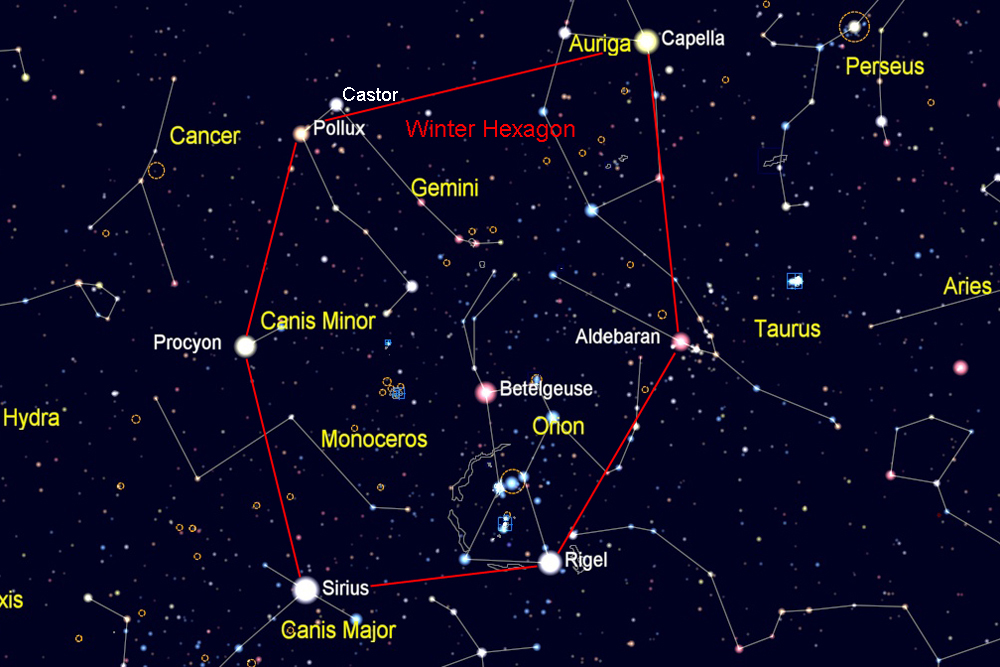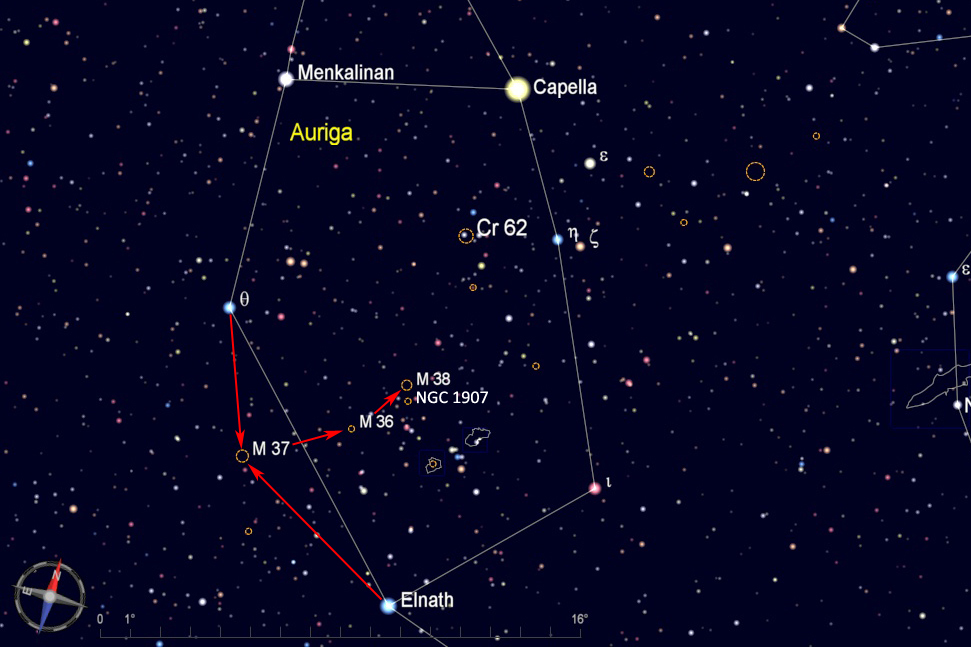
Find the Winter Hexagon, which is composed of six of the brightest stars in the sky--Sirius, Procyon, Pollux, Capella, Aldebaran, and Rigel. On mid-winter evenings, these stars form a large oval stretching from low in the south to nearly overhead. As spring begins, the Winter Hexagon sinks toward the west. The constellation Orion and its bright red star Betelgeuse are inside the Hexagon.
For this star hop, find Capella, the most northerly of the six stars in the Hexagon, and the brightest star in the constellation Auriga.

The brightest stars of Auriga form the shape of a slightly crooked house. Look for the two stars that are on the opposite side of this house from Capella (θ and Elnath). Use these two stars to form the base of a long, thin triangle, with the third point just outside the house, as shown below. This is the location of M37, the largest and brightest of these three clusters. Move 4 degrees to the west-northwest to reach M36, which is smaller and contains fewer stars. Finally move slightly more than 2 degrees to the northwest to find M38, and 1/2 degree south of M38 is NGC 1907.
